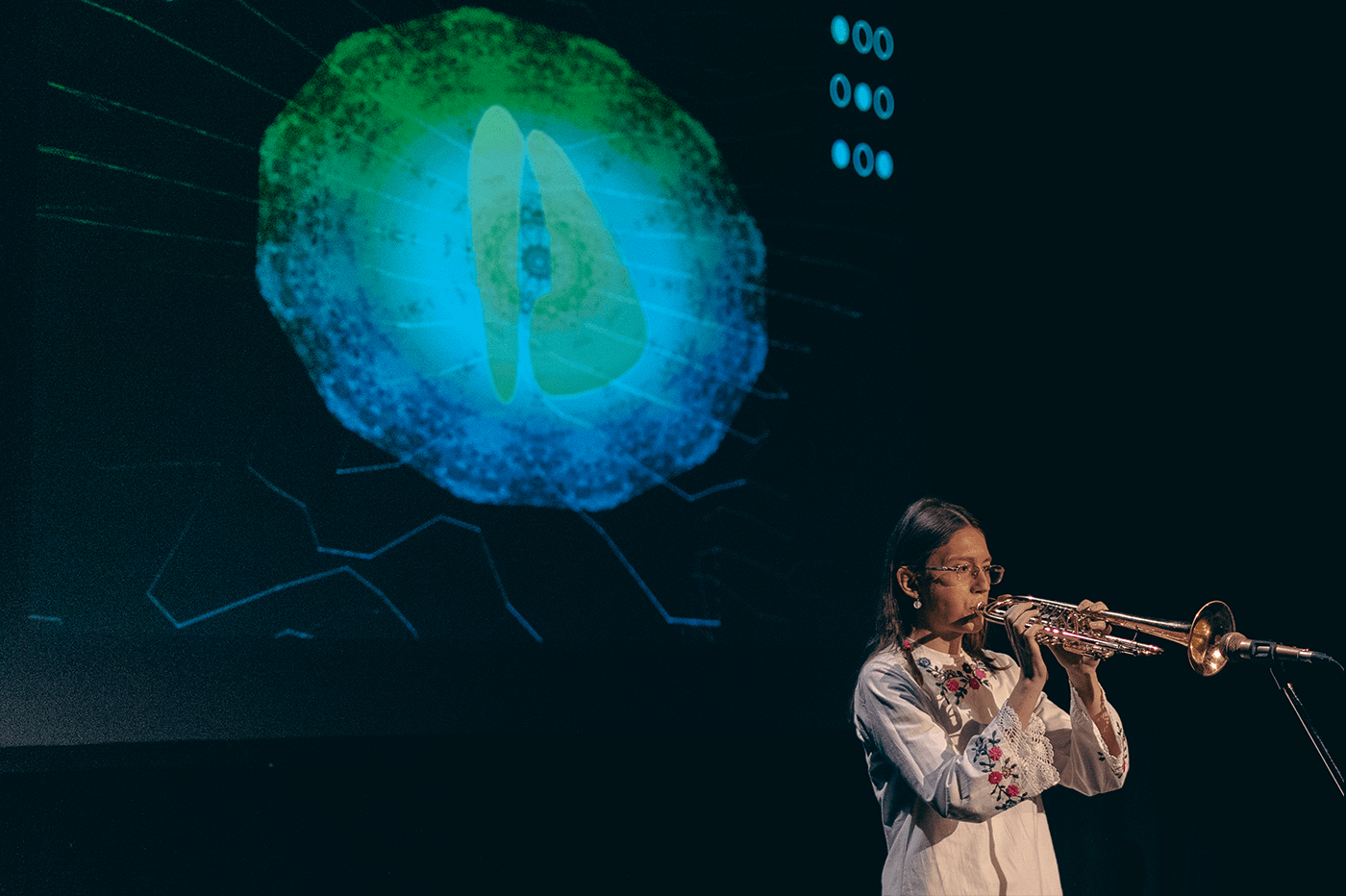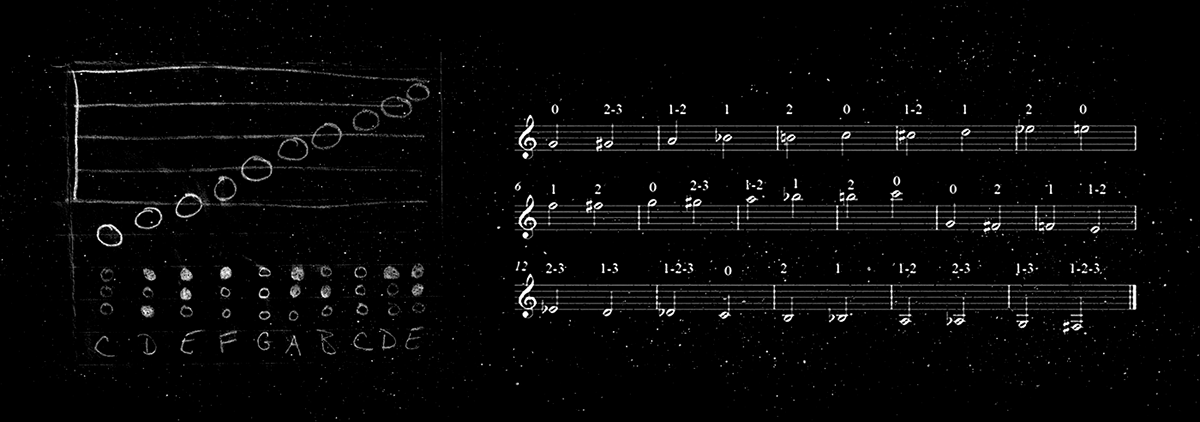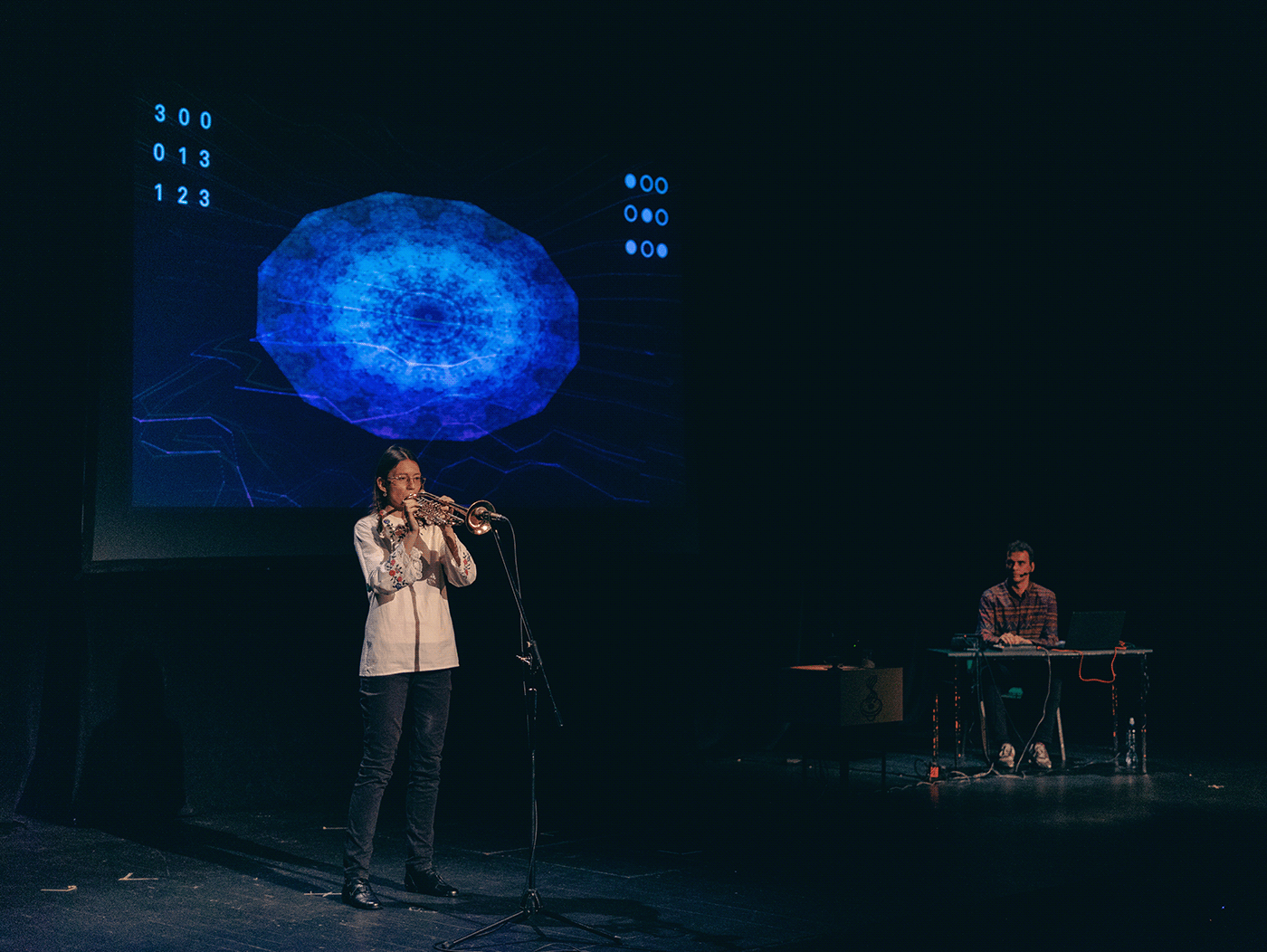
SEE THE MUSIC
LISTEN TO THE PICTURE
Augmented Lecture Performance
Director, text: ANA PINTER
Lecture, text, trumpet: JELENA JOKOVIĆ
Lecture, text, live visualisation, presentation, sound: ALEKSANDAR LAZAR
Performance:
"SEE THE PICTURE LISTEN TO THE MUSIC / SLUŠAJ SLIKU VIDI MUZIKU"
Theatre of Wonder festival 2022
Faculty of Dramatic Arts, Belgrade, 2022
Production:
CURIOUS - Culture as a Unique Resource to Inspire, Outreach & Understand Science
Photography: Tanja Drobnjak

"SEE THE PICTURE LISTEN TO THE MUSIC / SLUŠAJ SLIKU VIDI MUZIKU"
Theatre of Wonder festival 2022
Faculty of Dramatic Arts, Belgrade, 2022
ABOUT
"SEE THE MUSIC LISTEN TO THE PICTURE” is an Augmented Lecture by ethnomusicologist Jelena Joković and visual artist Aleksandar Lazar. They will perform an experiment with a trumpet and a tonoscope, which will enable them to visually show the audience musical elements that are usually recognized and interpreted only through the sense of hearing.
In theory, this phenomenon is known as synesthesia, and in this specific case, under the name "colored hearing", which is the ability to see the plasticity of the melody or the color of the musical tonality. In addition to making the aesthetic experience unique, synesthesia has great importance for the development of trumpet music in our cultural climate. As our best trumpet players mostly acquired the skill of playing orally and outside of school institutional systems, most do not use or even know the official music system.
By understanding the process of synesthesia, we can better understand the ways in which these performers learn, remember and perform music, as well as the other benefits of this informal type of education.

"SEE THE PICTURE LISTEN TO THE MUSIC / SLUŠAJ SLIKU VIDI MUZIKU"
Theatre of Wonder festival 2022
Faculty of Dramatic Arts, Belgrade, 2022
SYNESTHESIA
(Colored Hearing)
On a psychological level, there is a phenomenon of association of different senses called synesthesia (which is the opposite of anesthesia, which represents the absence or dullness of the senses). The foundations of my research are based on the synesthesia of the senses of hearing and sight, which is professionally called "Colored Hearing".
Synesthesia is the only one that can answer what it's like to see visual manifestations while listening to music without watching music videos. For most people, this is not logical at all. But for synesthetes, as people with synesthesia are called, the sound they hear has form, colors and textures.

Synesthetic representation of sound through image: shaggy / sharp / fluid shape-sound

SOUND VIBRATION
(Stationary Waves)
The visualization of sound vibrations using salt particles, powders, and various liquids has a history in both artistic and scientific practice. From a scientific point of view, this area concerns the impact of sound and vibrations on matter through the physical phenomenon of stationary waves. This phenomenon is quite well-known and noticeable in everyday life. It takes place during the propagation of sound waves in air, water, on a stretched membrane of a drum, strings on instruments or air in wind instruments.

Stationary Waves Animation

TONOSCOPE
(Cymatic)
The key place for research in this area is occupied by the Swiss doctor Hans Jenni, who became a sound researcher and named this field of reaserch Cymatcs. For the purposes of his experiments, he constructed an instrument "Tonosckope".
The tonoscope that I designed has another advantage. I have added a camera connected to computer software for editing and creating visuals in real time. This instrument also uses the waves from the speaker and transmits them to a stretched membrane on the surface of which salt particles are sprinkled.
Different volume and pitch of the sound reproduced by the speaker will create different visual patterns. According to them, we will be able to see the very nature of sound and sound waves. The camera captures the creation of those patterns and transmits that information to software where I can record, project, and transform that material in real time to the music. The trumpet will be the source of sound, the speaker in the tonoscope box will be the emitter of sound vibrations, and the membrane will be the surface on which particle patterns will be created.

Cymatic visualization of sound using a self-built Tonoscope

Hans Jenny (1922 - 1996), Tonoscope, Cymatic



ALTERNATIVE MUSIC NOTATION
(Fingering Diagram)
Trumpeters in Serbia mostly came from rural areas, less often from cities. They were not musically educated and were not musically literate. The largest number of trumpeters learned using a hybrid audio-visual and numerical-graphical method. In simpler terms, trumpeters listened to the sounds and imitated them on their instrument. At the same time, they would visually follow the movements of the fingers, which were used to obtain a certain tone or several of them.
In this way, the trumpeters learned to play both numbers from the traditional repertoire of their region and numbers from other countries in a stylistically correct manner. The numerical-graphic method involved marking tones using numbers (0-1-2-3) and colors. Those numbers denoted the combinations of valves that had to be used to produce certain tones. The note-graphic method involved following the movement of the tones that make up the melody.

Trumpet Alternative Notation - Fingering Diagram

Fingering Diagram Animation



"SEE THE PICTURE LISTEN TO THE MUSIC / SLUŠAJ SLIKU VIDI MUZIKU"
Theatre of Wonder festival 2022
Faculty of Dramatic Arts, Belgrade, 2022
THANKS FOR WATCHING!
Hit one of those appreciate button if you like it
You can folow my work on Instagram








